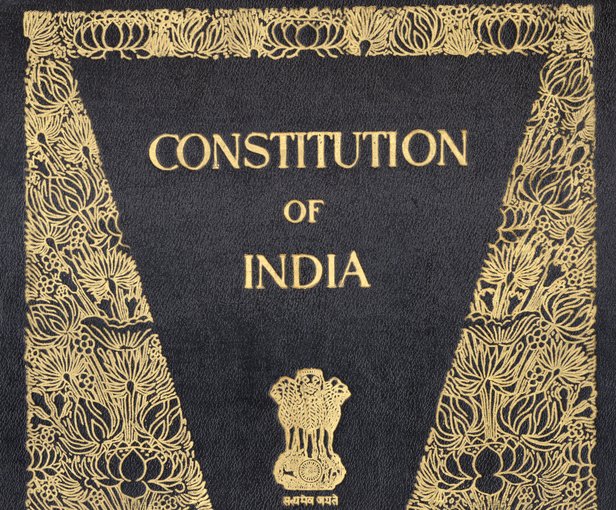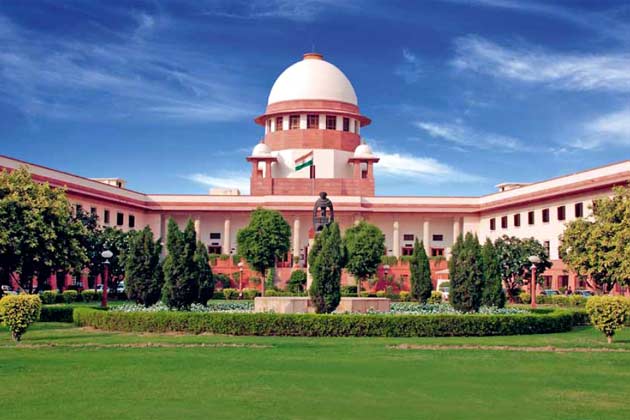
In an editorial dated 01 Sep 2022 the New Indian Express has raised an important issue about the final aim of reservation – whether to remove social and educational backwardness or end untouchability.
Because of the judicial mill grinding frustratingly slow; the fact that in the fast changing internet manipulations access to important materials already published is limited for various reasons; and the increasing trend in the academia not to sweat and strain for data which are not readily available — which was not the case about two decades ago, comprehensive debates on vital policy issues like social backwardness and reservations in their historical and social contexts have been virtually impossible.
That in a way explains the inordinate delay in solving the debate, in the present case, on the Scheduled Castes and reservations. Though the Supreme Court now wants the Centre to make its stand clear in the next three weeks one is not sure whether the debate will be solved any time soon.
In this connection, I reproduce here the editorial mentioned above as an immediate backdrop to the debate followed by my own article, Supreme Court and the SCs, on 11 Mar 2008, in the same newspaper on the same subject. It is pertinent to pinpoint that whoever prepared the editorial did not access my article, presumably for the reasons mentioned in paragraph 2 above and a seeming journalistic lack of historical sensitivity.
I
Scheduled Caste tag necessity or raffle
The unresolved debate also drags in the final aim of reservation—whether to remove social and educational backwardness or end untouchability.
TNIE, editorial, 1 Sep 2022
Should the government reservations for Scheduled Castes be extended to ‘Dalits’ among Christians and Muslims? The Centre never answered this question in the last 18 years. The Supreme Court now wants it to make its stand clear in the next three weeks. This is part of the new Chief Justice’s attempt to wipe the dust off languishing cases with ‘social ramifications’. The petition filed in 2004 said it should be unconstitutional that Scheduled Castes belong only to the Hindu, Sikh and Buddhist faiths. Over the years, petitioners from ‘Dalit’ Christians and Muslims also filed intervening petitions. The case last came for hearing in 2015. It is too complex for arbitration because of compelling arguments on either side.
The ayes argue that if Sikhs and Buddhists can enjoy reservation even though they are distinctly non-Hindu, why not the deprived castes among Muslims and Christians? Their sections already have OBC status; extend the SC status to them by the same logic. Lastly, rejection of reservation is ultra vires the right to religious freedom and, thereby, the choice to convert. The nay-sayers counter morally. Since they converted to Christianity or Islam to escape the malaise of caste in Hinduism, they lost the right to seek Scheduled Caste status and reservation, both of which reinforce caste. Why do the converts need the SC tag if their religions do not practice untouchability or caste discrimination? The unresolved debate also drags in the final aim of reservation—whether to remove social and educational backwardness or end untouchability.
It is not black and white, as the apex court will realise when it begins hearing the case. Discrimination and untouchability dog Scheduled Castes and the deprived castes in all religions. That is the bitter reality. For want of the SC tag, they do not benefit from the SC/ST (Prevention of Atrocities) Act. They cannot contest elections from seats reserved for SCs. The Rajinder Sachar and Ranganath Mishra commissions plead eloquently for their inclusion as SCs. Yes, politico-religious considerations have caused the delay in finalising a stand all these years. However, a fundamental aspect of the issue usually gets neglected. It is about first doing away with the denial surrounding the centuries-old social evils of untouchability and discrimination.
II
The New Indian Express
Supreme Court and the SCs
Tuesday March 11 2008
P RADHAKRISHNAN
THE observations by the Supreme Court on whether the Christians would admit that they practise caste system and the Dalits among them face social discrimination, and the query since when the Muslims have started following the caste system seem to convey its perception of social deprivations in terms of religious texts, and its confusion between text and context. To place the debate in perspective there are six issues to be discussed here.
One, as the emergence of Dalits among the Hindus is often attributed to Manu’s misdeeds through his now infamous injunctions, and the SC Hindus are the lower segment of the Hindus, the Christian and Muslim demands raise the question whether there are corresponding segments among them. The answer is ‘yes’ for at least three reasons:
(a) There is a world of difference between religion as ideology and religion as praxis; and change of religion by itself does not change the social reality through which religion expresses itself. Stated differently, the social disabilities of several centuries do not vanish by a mere change of religion; more so, when the converts do not live in a society of their own religion, but live in the society of the dominant religion which they have left. It is precisely for this reason that there has been indigenisation of the religion of the converts.
Consequently, the Christian and Muslim reality in India is not the same as in other countries, and it is meaningless to apply to it textual ideals of equal brotherhood and so on. In this context it is important to recall the observations of Dr. B.R. Ambedkar, in his ‘Annihilation of Caste’, that caste being primarily the breath of the Hindus, “the Hindus have fouled the air all over and everybody is infected, Sikh, Muslim, and Christian.”
(b) Far from being proselytism, that is, making of individual converts who at conversion are abstracted from their social and cultural context, conversions in India have been migration from one religion to another; or conversion of individuals and whole groups without detaching them from their social context.
(c) The Catholic tradition of accommodation. When Robert de Nobili established the mission in Madurai in 1606, he set himself up as a Christian sanyasi, separating from most contacts with low-caste Christians and conforming to high caste patterns of behaviour in food, dress, etc. His initial converts were from the high castes, including Brahmins, and he allowed them to maintain most of their customs. They were not required or encouraged to break caste by associating with the mainly Paravar Christian congregation or with foreign Christians. “By becoming a Christian”, he wrote, “One does not renounce his caste, nobility, or usages. The idea that Christianity interfered with them has been impressed upon the people by the devil, and is the great obstacle to Christianity.” Thus, de Nobili’s converts were allowed to retain their tuft (kudumi), sacred thread, customary bathing and food rules, and all the regulations governing social intercourse. It was therefore possible for them to remain Christians within Hindu society.
In spite of papal decrees of 1734 and 1744 denouncing untouchability as alien to Christianity, and widespread criticism of the Jesuits who were identified with this policy of accommodation, it became generally accepted among Catholics that caste was a civil institution, which could be used for evangelistic purposes and maintained with only minor modifications within the Church. A major outcome of this has been the social reality of Dalit Christians, caste based segregation of the converts within the church, and caste discrimination both among the clergy and the laity.
Two, the issues raised by the court are not new; they were debated by the colonial administration in the context of Hindu converts to Christianity. To draw upon a part of this debate, in the context of representations to the Madras government on securing to Indian Christian pupils of backward origin the concessions admissible to the backward classes under the Madras Educational Rule, in 1924 the Director of Public Instruction wrote: Christianity is a religion while Panchamas (present SCs) … form a social class with a definite place in the caste system of the Hindus and it is not possible for any single individual to profess two different religions, Christianity and Hinduism at one and the same time and furthermore Christianity does not accept any caste. So that logically a person may be a Christian in which case he cannot accept any caste system, and is not a member of a backward class or he may be a Hindu Panchama or Adi Dravida in which case, he may be a member of a backward class. But he cannot be at one and the same time both, Christian and Hindu (Panchama), both nonbackward and backward.
Responding to the DPI’s argument the Education Secretary contended that conversion by itself does not automatically and materially alter the economic condition of the classes or remove their educational backwardness.
Three, though the SC list first appeared in a specific colonial context as part of the Government of India Act 1935, under pressures from the Depressed Classes and the prolonged campaign of their leader Dr. Ambedkar, and the groups included in the list were only Hindu Untouchables, what was the purpose of creating the SC list as part of the Constitution? It was not for abolition of untouchability, that too among the Hindus alone; the provision for that was in the fundamental rights under Article 17, which refers to only untouchability and its practice in any form without reference to religion. If the SC list was for social amelioration of the groups included in it, it is only legitimate for Christians and Muslims to demand that the groups similarly placed among them as the Hindu SCs are also enumerated and included in the list. Failure to do so will perpetrate the Hindu tilt of the state in implementing a major provision of a secular Constitution.
Four, though the Government of India asked the Ranganath Mishra Commission on religious and linguistic minorities to examine the demand of Christians and Muslims, and the commission recommended delinking SC status from religion by an amendment to the Constitution (SCs) Order, 1950, and inclusion of Dalits among Christians and Muslims in the SC list, the refusal of the government to make the report public makes its bona fides suspect.
Five, though the National Commission for Scheduled Castes has endorsed the recommendation of the Mishra Commission, its rider that inclusion of Dalit Christians and Muslims in the SC list should not encroach upon the benefits of those accessing reservations is questionable. Once the Dalit Christians and Muslims are included in the SC list they should be part of the same list, eligible for the entire package of affirmative action including political representation as now available to the SCs.
Six, if Christians and Muslims did not recognise Dalits among them and demand the same treatment to them as to the Hindu Dalits till recently, it is the state that needs to be blamed. Had the state paid adequate attention to the SCs immediately after the Constitution came into force and continued it systematically, say for ten years, affirmative action as envisaged in the Constitution would have come to an end long ago. By its political chicanery and pussyfooting, as R H Tawney rightly stated in his classic work Equality, the state has only prolonged its indulgence in “inducing a thousand donkeys… to sweat by the prospect of a carrot that could be eaten by one.” That indulgence has proved to be an irreversible and costly perversion of the very idea of welfarism.
The writer is Professor of Sociology, Madras Institute of Development Studies, Chennai
III
I have done this exercise hoping that those interested in the unsolved policy issues concerning the Scheduled Castes and reservations will do their homework of rigorous reading and research on all relevant issues and enable the judiciary to settle the matter once for all and authoritatively.















































